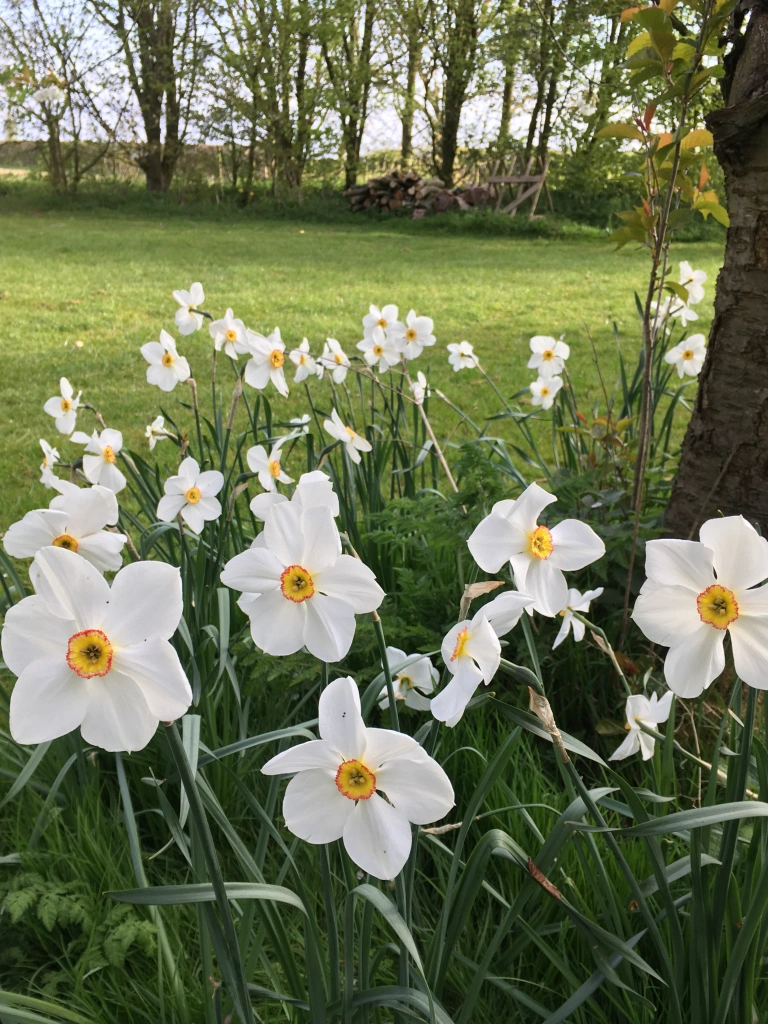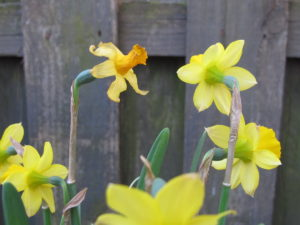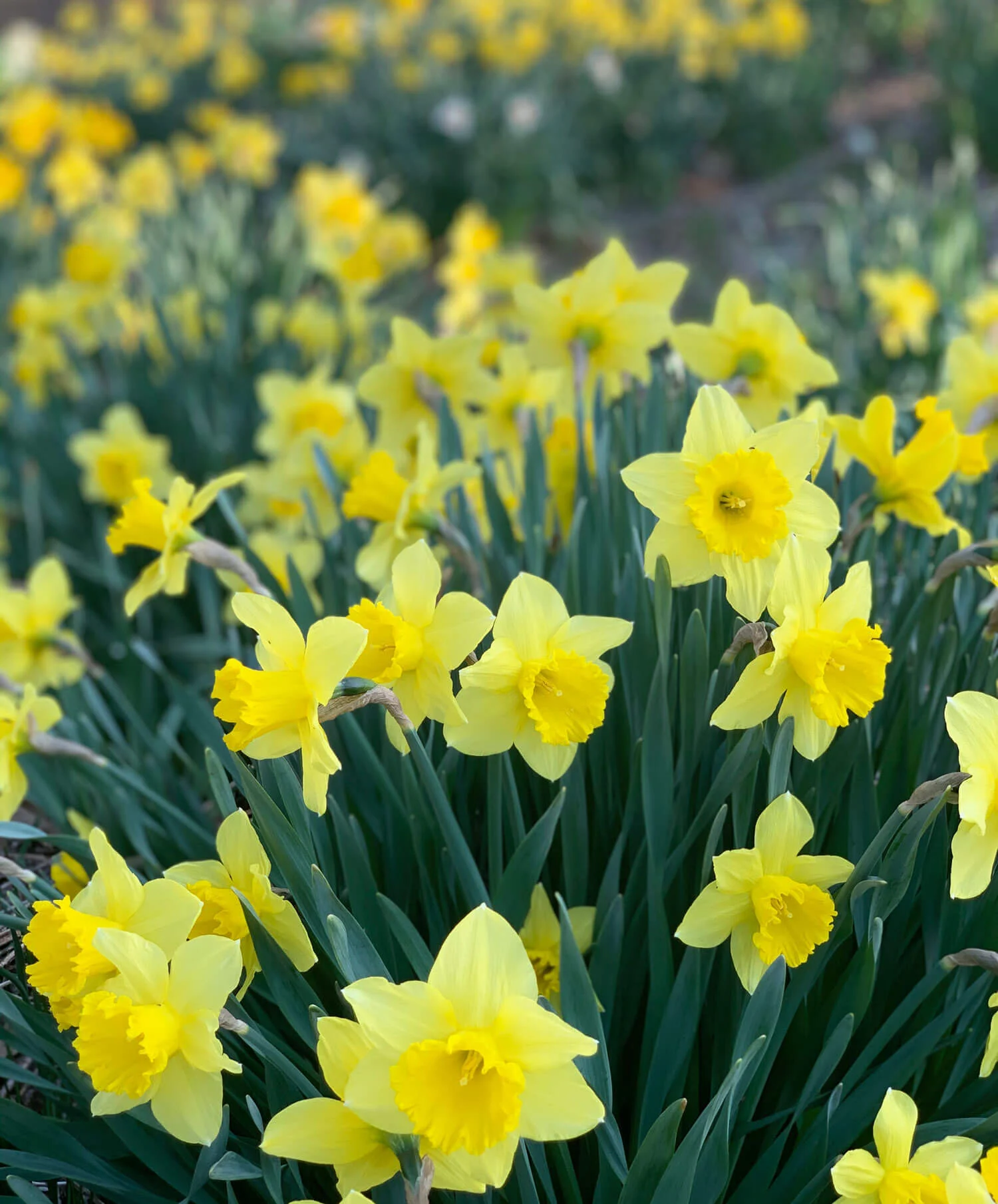Daffodils, known for their cold-hardiness, durability, and deer resistance, are among the best spring-flowering bulbs. Not only do they perform well in the garden, but they also make excellent cut flowers. A bouquet of daffodils can brighten any space, bringing a touch of spring indoors, even on the coldest, dreariest days.
I grow over 20 varieties of daffodils, which bloom throughout the spring, from early March to May. I enjoy creating bouquets for my home and sharing them with friends and neighbors—because, who doesn’t love daffodils? Here are my top tips for cutting and displaying daffodils in simple, beautiful spring bouquets.
1. Harvest Daffodils at the Right Time
Daffodils are ready for cutting when their necks begin to bend. When the buds first appear, they stand upright, a stage known as the “pencil stage.” While the buds may swell at this point, they are best cut once the necks start to bend—this is called the “gooseneck stage.” At this point, the flowers will open within 8-24 hours.
If cold weather is approaching, it’s fine to cut daffodils a bit earlier, while the buds are still protected. This ensures the blooms aren’t damaged by a hard freeze.
2. Pull Stems from the Base
To harvest daffodils, reach near the base of the plant and gently pull the stem instead of cutting it. This method causes less sap leakage and gives you a longer stem for arrangements. Be cautious, as some people are allergic to daffodil sap, so wearing gloves is a good idea.
3. Condition Cut Daffodils in Cool Water
Once cut, place daffodils in cool water immediately. Let them rest for several hours or overnight in a shady spot. This conditioning process allows them to “heal” from the cut and reduces the sap they release into the water, which can affect other flowers like tulips or anemones.

4. Choose the Right Display Container
Daffodils come in various sizes, so select a vase that complements the size of the flowers. Smaller blooms look lovely in petite containers, while larger bouquets should be displayed in bigger vases.
5. Reuse Glass Bottles as Vases
Glass bottles, such as old canning jars or vintage bottles with heavy bottoms and narrow necks, make perfect vases for daffodils. The transparent nature of glass highlights the linear stems, creating a simple yet elegant display.
6. Trim Stems to Different Lengths
For a balanced bouquet, trim daffodil stems to varying lengths—long, medium, and short. This creates a pleasing effect where flowers of different heights are stacked, drawing attention to the beautiful trumpet shapes and the graceful backswept petals.
7. Feature an Odd Number of Flowers
In smaller bouquets (fewer than ten flowers), it’s visually appealing to use an odd number of blooms. While the reasoning behind this is not fully understood, odd numbers naturally attract the eye, making the arrangement feel more harmonious.
8. Anchor Long Stems in Wide Containers
To keep long daffodil stems upright in wide containers, use damp sand, floral wire, or a grid of household tape. If you use tape, cover it with sprigs of evergreen to hide it and create a fuller, more natural look.

9. Add Seasonal Decorations
Enhance your daffodil displays with seasonal items like painted eggs, jellybean bowls, or figures of bunnies, ducks, or chicks. Daffodils pair beautifully with these festive accents, adding extra charm to your home décor.
10. Display Fragrant Daffodils at Nose Level
While most daffodils lack a strong fragrance, some mid- and late-season varieties offer lovely perfumes ranging from sweet to spicy. These daffodils should be displayed at nose level to enjoy their scent, especially during the day when the fragrance is most intense. Keep them near you, as their bloom time is fleeting.
By following these simple tips, you can enjoy the beauty of daffodils both in the garden and indoors. Whether you’re creating a vibrant bouquet or arranging them thoughtfully in a vase, daffodils will brighten up any space and bring a touch of spring to your home.
